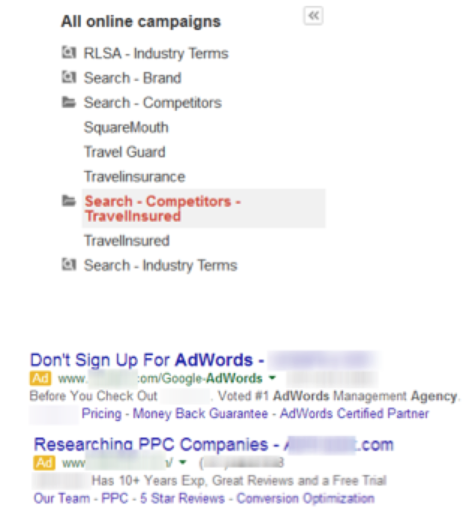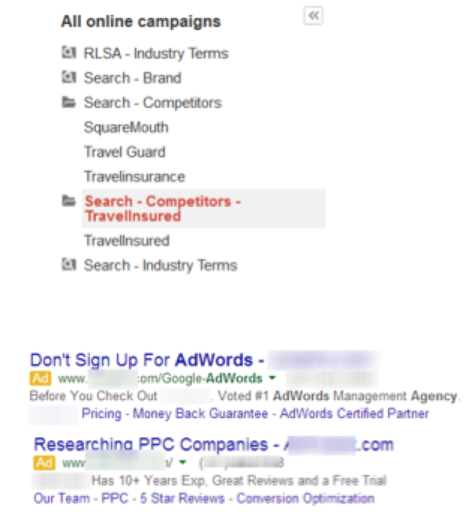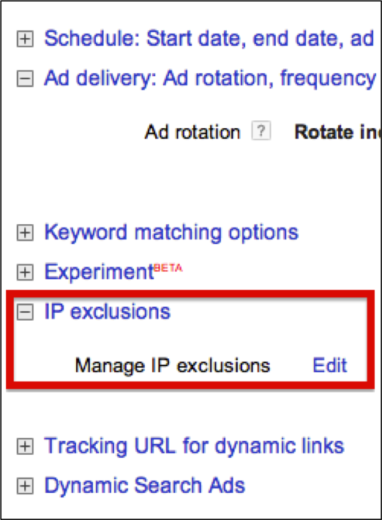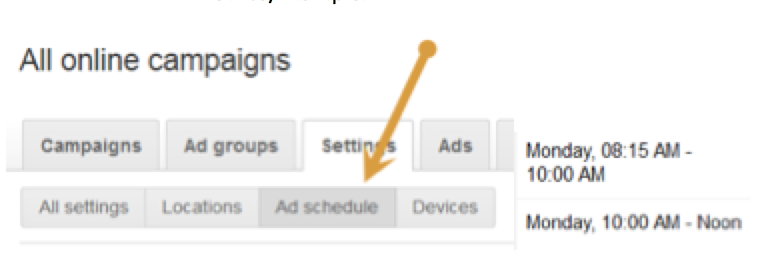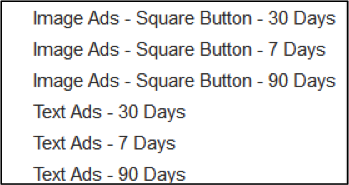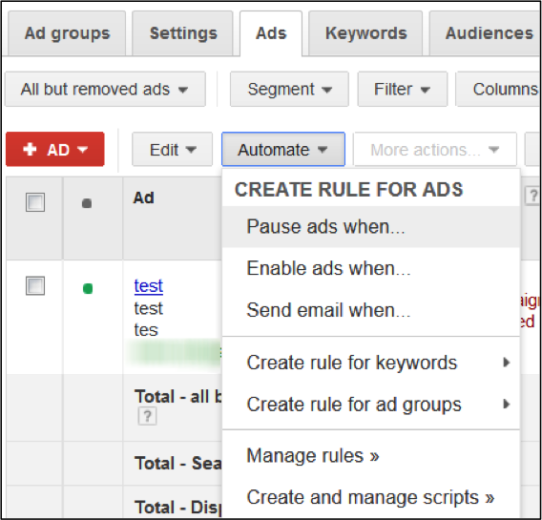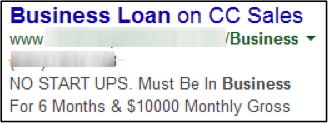There are few things America loves more than Football. With football season approaching, I figured I would release a “PPC playbook” for lead generation. These top “plays” can increase the efficiency of your PPC performance, but always keep in mind that like in football, the same plays do not work for every team. I recommend implementing one play at a time, to measure efficacy.
Just like football, these plays are going to take practice. Think if a football team only practiced in the locker room and worked on building out the playbook, without going to the field. Probably wouldn’t make the playoffs right? These plays must be taken to the field, as some may work better than others in different industries. Most of these “plays” are meant for national lead gen, (form fills, and phone calls) though some might be very useful in local situations.
1) Name: “Competitive Play”
Description/why: Find top five-ten (online) competitors research their keywords, ad copy, and display ads.
How to/Example: Research online competitors by searching keywords and competitor brands. Once identified, use the following competitive research tools to further efforts. Here is an awesome PPC Hero article by Mark Casey on uncommon ways to do competitor research. Here are a few of my favorite tools outside of Google’s Suite:
2) Name: “Coat Tails”
Description/why: In this play, we are basically riding the coat tails of our respective competitors. Many companies already offer what you are offering, and have established a brand that the market knows and trusts. I will frequently build out specific campaigns to target a competitor’s branded keywords (After I have researched appropriately).
How to/Example: Bid on competitors branded terms and write ad copy to shift consumers to the brand you represent or are working for. You can see in the screenshots below, I have built a search campaign called “competitors” and have segmented my groups by the competitor brand name. You will then note, ads following can move the prospect to the brand I represent (integrate slowly).
3) Name: “Freeze Out”
Description/why: PPC is extremely competitive, and a lot of your work is based off the work others have already done. I recommend not letting your competitors see all of your hard work. Once you have identified your top five-ten competitors, block them from seeing your ads. There are several ways to accomplish this.
How to/Example: One is to jump on their website, and get the zip code and don’t show your ads in that zip code. Another way is to email your top competition and when they respond get their IP address from the email and block that IP in your settings.
4) Name: “Rotation”
Description/why: Most of us probably run A/B tests on text ads, but that is simply not enough anymore. I recommend having at least two desktop ads, and two mobile ads. If you’re running display, you will want to have closer to four ads running. This will keep your ads rotating and fresh. Visitors you remarket to may not get hooked on one ad, but another may better speak to their situation. You will also want your ad copy to focus on the benefits of your product or service. If you do implement four display ads, you will want to change your frequency settings to ten or more. Also, be careful when you use Googles Ad Rotation settings. Here is a post which outlines how dramatic ad rotation can affect your account.
How to/Example: Make your text ads benefit heavy. Connect the facts about your product to the solution for your prospective client. (Remember to always be testing your ad copy). For example, you’ll get a great night’s sleep and be well rested for a day of fun activities that you’ll fully enjoy!”
5) Name: “Banner Border”
Description/why: This play is pretty straight forward, but it needs to be pointed out. Make your add stand out from all the rest, without stuffing it. Keep it clean.
How to/Example: On any of my display banners, I add a contrasting border so that it stands out.
6) Name: “2-4 Hour Parting”
Description/why: Day Parting (2-4 Hour Segments): The reason we want to part everything into 2 hour segments, is to get down in the weeds of your account to see when your ads are converting best so that we better serve our clients. The next step would be to put a +% bid adjustment on hours of the day that convert at a higher rate, or –% bid adjustment on the hours of the day when we are converting lower or not at all. *If CPA/CPL is within your clients goals.
How to/Example:
7) Name: “Action Keywords”
Description/why: When someone turns to Google, they are looking for something. Generally, these types of “queries” are categorized into three types.
How to/Example: Identify the query types that are most profitable to your client, and target them using modified broad match type. In most cases, transactional/action based queries are most profitable. That said, I would investigate what my competition is bidding on because I may be able to purchase a lot of navigational or informational queries for pennies on the dollar.
Navigational Search Queries
This type of search is basically a search where you are searching for a specific website or property. Example: ”Facebook”, “Twitter”, “carnival cruises”, “best buy”, etc.
Informational Search Queries
If you are bidding on these terms, make sure your brand is represented as a trustworthy, and authoritative source. (Have the content to back up your ad).
Transactional Search Queries
This type of query is searched the least, however when it is searched conversion metrics are through the roof. The reason is people are searching for an answer to their problem, or to “buy hp envy x360” laptop. Focusing on transactional keywords or action based keywords is an easy win or a way to gather low hanging fruit, TODAY.
8) Name: “Jargon”
Description/why: An analyst will probably have between 30-70 clients that each spend about 8-10k/month in AdWords/Bing ads. They might say they don’t have time to learn every industry and the jargon that goes along with it. The fact here is, if you don’t learn your clients industry and competitors, your account will churn to an agency that will do that research. A good place to start is plays 1 and 2, to gather insight and then use DKI (Dynamic Keyword Insertion) to display relevant keywords in your ad text.
How to/Example:
{Keyword: DKI Insertion}
Description Line 1
Description Line 2
www.example.com/{KeyWord:DKIInsertion}
9) Name: “Basic LPO”
Description/why: This play, though said to be “basic” will go a long way with converting clicks into leads. You don’t need to go crazy about it, but you do need some of the basics.
How to/Example:
- Use a platform that you can optimize as you go and run A/B tests. I personally like Unbounce
- In lead gen, you must always have call tracking in place. I like Call Tracking Metrics and Mongoose Metrics
- Make sure you have a clear and concise call to action. Don’t confuse people. I will always put the phone number in the top right hand corner and the form fill on the right side.
- Test Form Fill Validation and thank you page. Also, make sure your Adwords and Analytics are connected for sales cycle analysis reasons.
- Conversion tracking code should be placed on your thank-you page and tested to make sure it is working. In some cases you may not have a thank-you page, so you will need to use an on-click function and customize your analytics goals.
- Use the color wheel to find complementary colors for your call to action buttons. Here is one I use (you will want to use the opposite of your website skin for CTA’s).
10) Name: “RLSA”
Description/why: “Remarketing Lists for Search Ads” – Set up your remarketing list and RLSA with parting to match the sales cycle. Break out your parting into 1 Day, 2 Day, 3 Day, 7 Day, 14 Day, 30 Day, 45+.
How to/Example:
11) Name: “Ad Rank”
Description/why: Using automated rules for positioning. Ideally, you will want to be in the 3rd-5th spot because you can get more clicks for the same budget.
How to/Example: In this play, industry intelligence is key, as it may work well for one industry and not the other. I would phase this in, to check performance. I love this PPC Hero post that breaks out using automated rules by Amanda West-Bookwalter. You can essentially automatically increase or decrease your bidding on a specific keyword if the keyword has converted in the previous weeks/months.
*If creating a automated rule and leveraging the bid adjustment function. Make sure that your CPA/CPL metrics align with your clients’ goals.
12) Name: “Qualifiers”
Description/why: Use ad copy qualifiers to better target your audience.
How to/Example: In the text ad below, the messaging says “NO START UPS” and also includes other qualifying traits, in an effort to eradicate wasted clicks.



